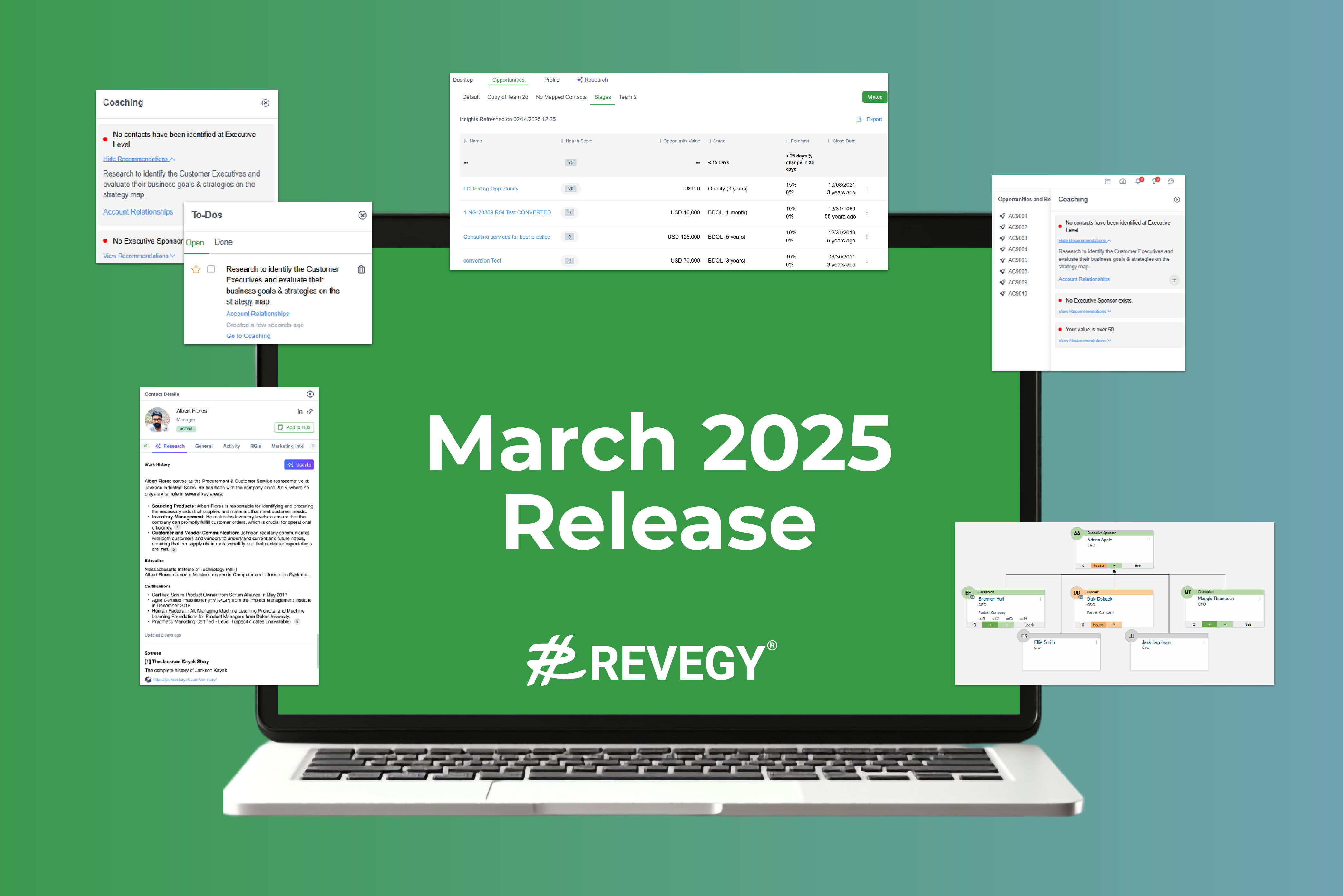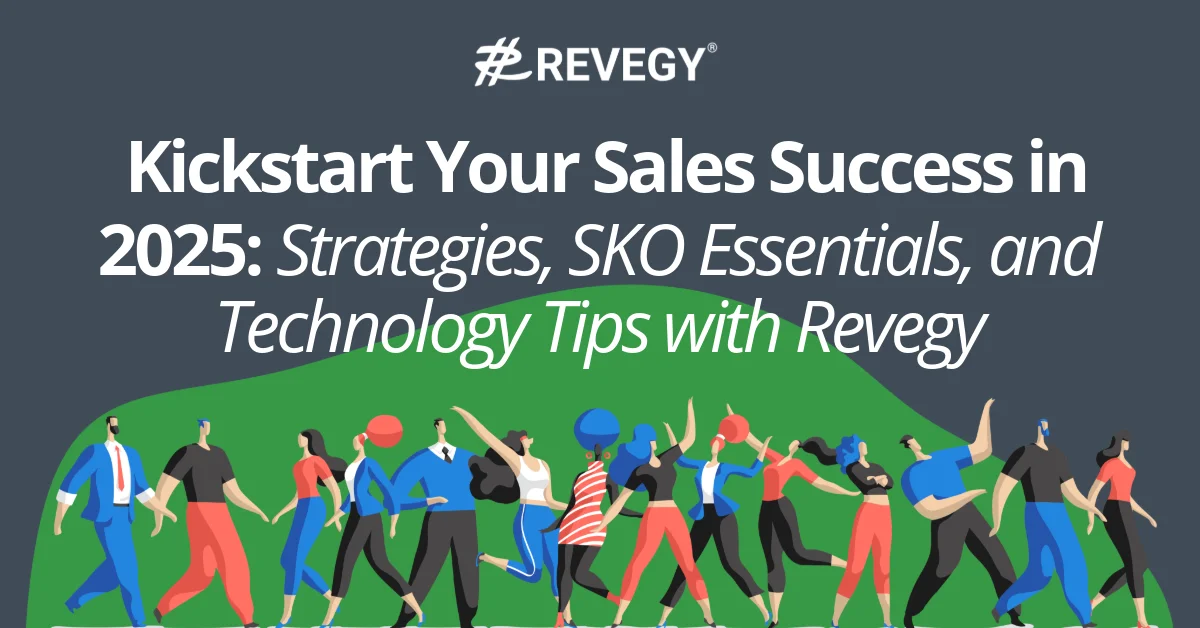Strategic account planning is essential for maximizing revenue from your largest accounts. By understanding and addressing each customer’s unique needs and opportunities, sales teams can drive growth and retention. This guide consolidates expert insights and best practices to help you optimize your strategic account planning.
What is Strategic Account Planning?
Strategic sales account planning is a structured, repeatable methodology for analyzing an account or set of accounts, developing a deeper understanding of them, and identifying opportunities. According to Robert Muñoz, Forrester’s Vice President and Principal Analyst of Sales Operations Strategies, it is:
- A success plan for sales reps that aligns their assigned accounts, quota, and commission plan.
- A process by which plans are regularly developed, reviewed, and updated.
Account planning encourages salespeople to delve into each customer’s unique needs, motivations, and business circumstances. This deeper understanding allows sales managers to identify new ways to increase revenue from existing accounts by presenting proposals that align with clients’ current challenges and opportunities.
Expert’s Insight
First and foremost, you need to thoroughly understand the products you offer, the target personas, the features and benefits, and the problems they solve. This means gaining a deep and comprehensive understanding. Write everything down in full sentences, not just bullet points.
Why is this important? You’ll use these value propositions in your cold emails, demos, discovery calls, and talk tracks. Take the time to articulate them thoughtfully. Commit them to memory until you know them inside and out. A LinkedIn study found that 70% of buyers are more likely to engage with representatives who can clearly articulate the value proposition. That’s how crucial it is.
Kyle Coleman, CMO at copy.io
The Key Issues with Strategic Account Planning
Despite significant investments in account planning strategies, many sales organizations fail to operationalize their plans effectively. This failure often results from a lack of coordination between sales, marketing, and other relevant channels, focusing instead on short-term objectives. Successful account planning requires long-term coordination and collaboration.
8 Elements to Elevate Your Strategic Account Planning
1. Organizational Alignment
Organization alignment is one of the critical ingredients of a successful strategic account plan. You must have a commitment to an account planning ecosystem with executive engagement and collaboration, cooperation, and communication with marketing, channels, partners, and other functional groups. Consistent, measurable business goals must be shared between functions to drive account acquisition, growth, and retention.
2. Planning Methodology
It’s critical to have a repeatable set of role-based methodologies, with multiple learning modalities and a change management process.
Methodologies can be internally developed or leverage 3rd party resources. There are multiple plan types based on sales roles, and they should be tailored to suit your business model. A few of the multiple learning modalities can include written guides, workbooks, eLearning, workshops or coaching.
3. Planning Components
The minimum set of plan components to result in an executable plan. Plan components will vary by plan type but most all would include relationship and strategy maps, action plans, and scorecards.
4. Planning Process
This is the process of creating, reviewing, and approving the account plan. It is important to have a defined purpose, key participants, and a known outcome for each step.
5. Sales Management Process
It’s important to integrate the planning process into quarterly reviews and updates. First-line managers must be enabled to review and coach on the quality of account plans and the execution of the action plan.
6. Metrics and Reporting
Clearly defined measures and reporting cadence are a must. You need to be able to track results in terms of short-term activity, mid-term pipeline growth, and long-term revenue growth by adapting core sales metrics to the program.
7. Infrastructure
Account plans should be integrated into a CRM. This allows sales teams to minimize double data entry and have a single instance for all global account activity. Account team members are then able to view and update common account information across regional or organizational boundaries. Further, executive and management dashboards and reports include global account metrics, providing a holistic view of the account. This allows sales teams to reinforce the methodology.
8. Implement and Sustain
Sales teams should leverage technology to enable the program to be part of the daily workflow of the rep and manager with highlighted metrics (i.e. value drivers, health indicators, and risk markers).
The Pros and Cons of Strategic Account Planning
Strategic account planning is considered one of the most effective strategies for businesses to increase revenue and maintain current sales. See what benefits and challenges this approach brings.
Benefits of Strategic Account Planning
Opportunity and Cross-Selling
Account planning presents opportunities for cross-selling and upselling of additional products and services to existing customers. With the help of account planning, sales representatives can easily identify the product lines or service offerings that are most relevant and suitable to pitch to their clients.
Customer Retention
Strategic account management helps to preserve customer relationships by prioritizing personalized offers, reinforcing value delivered, and proposing mutually beneficial solutions, which can significantly reduce churn rates.
Challenges of Strategic Account Planning
Intensive Process
It requires additional resources to gather a comprehensive understanding of buyer needs, competitive pressures, and other information. This involves ongoing research and regular relationship building, which may limit the team’s ability to focus on prospecting and pitching to new customers.
Costly
The overall costs of account planning could outweigh the revenue generated or preserved. This is because companies may end up spending more resources on targeting existing buyers than they would on acquiring new clients. Therefore, it is crucial for business owners to streamline the execution of the process and prioritize accounts based on their potential for generating the most significant revenue with the highest chances of success.
Undoubtedly, businesses may face some risks when implementing strategic account planning. However, they can mitigate these risks by directing their sales team to focus on accounts that have the highest potential to close new deals through personalized cross-selling and upselling, which can help offset the investment of resources and time.
Expert’s Insight
The most common mistake I see companies make with Strategic Account Planning is failing to find the ideal amount of research. Over-research costs you not just time and money but stresses sellers out and can cause “analysis paralysis”. Under researching means poorly done interactions which diminishes results. It takes time to find the right balance – but when you nail it the ROI is instant and impossible to ignore.
Ashleigh Early, CEO at Other Side of Sales Consulting
Technology to Operationalize Strategic Account Plans
Utilizing purpose-built technology is essential for efficient, integrated, and strategic account planning execution. Platforms like Revegy enable dynamic account plans that adapt to changing customer needs and facilitate cross-team collaboration.
The Revegy Strategic Account Planning Solution
To successfully execute and collaborate on strategic account planning, it is essential to utilize purpose-built technology that facilitates efficient and integrated processes. With Revegy, users can create dynamic account plans that adapt to changing customer needs, evolving relationships, and unexpected events. The platform facilitates collaboration across teams and ensures that everyone is on the same page, aligning the company’s efforts to achieve common goals.
Revegy provides a centralized view of all key accounts, helping sales representatives understand the current status and identify growth opportunities. Key features include:
- Account Potential: Uncover unmet needs and determine where to add value.
- Identify Key Stakeholders: Visualize critical relationships and mitigate risk.
- Account Health Visibility: Coach teams to mitigate churn risks and identify expansion opportunities.
- Achieve Consistency: Use playbooks to build effective strategies and ensure collaboration.
- Improve Forecast Accuracy: Use a scalable, repeatable process for better revenue prediction.
Unlocking Account Growth with Strategic Account Management
Strategic Account Management (SAM) manages and grows relationships with an organization’s most critical and high-value customers. It involves deploying specialized resources, processes, and technologies to identify, develop, and execute account-specific growth strategies.
SAM is vital for organizations looking to drive sustainable revenue growth and maximize customer lifetime value. However, many companies struggle to implement effective SAM practices, leading to missed growth opportunities and stagnant revenue streams.
The Necessity of Smarter Account Management
According to research presented at the Gartner (formerly CEB) Sales and Marketing Summit, only 28% of sales leaders reported that their “account management channels regularly meet cross-selling and account growth targets.” By implementing best practices in account management, sales leaders can address this challenge.
One key finding revealed that servicing accounts alone doesn’t drive more value from existing customers. Instead, account managers must have access to more advanced customer intelligence to understand how they can help customers achieve their unique business objectives.
Strategic Account Management Relies on Customer Intelligence
The importance of customer intelligence cannot be underestimated. The success of any enterprise sales team, whether expanding key accounts, increasing win rates, or improving forecast accuracy, is directly correlated to how well the team knows their buyers and how effectively they can translate that knowledge into a plan and execute it effectively.
However, most traditional enterprise sales organizations lack a common framework to document, organize, and analyze their customer’s business. Companies miss opportunities to deliver value at every life cycle stage without an intuitive, consistent way to consume and leverage customer intelligence.
To succeed in today’s modern sales enterprise, sales teams need strategies that empower them to articulate the value of their products and/or services to the customer more accurately.
Revegy Enables Challenger® Selling
Revegy offers a purpose-built, enterprise-class platform that integrates with any CRM to deliver a deeper understanding of the customer’s business, a roadmap to coordinate the sales approach, and an executable plan for maximizing account revenue in key account landscapes.
Revegy puts the power of visualization to work in account planning to expose what matters to your most strategic customers. Put simply; we translate customer intelligence into value for your client and revenue for you.
CRMs weren’t designed to address the complexity and depth of analysis, planning, or governance required from large, global, matrixed accounts. Revegy’s sales enablement platform is a game-changer for sales organizations looking to unlock account growth and drive customer value.
Identify Customer Improvement Opportunities with Relationship Maps
Revegy’s relationship maps clearly illustrate the customer’s organizational and political structure, showing connections between influencers and decision-makers, the status of your relationship, and their preference level for your solutions.
The map also reveals stakeholders’ unique goals and priorities, enabling you to focus your strategy and solutions on what matters most to build value and trust with the people driving the business.
White space maps enable you to uncover new revenue and expansion opportunities by charting the product landscape and highlighting where it intersects with opportunities to meet your customers’ near-term and long-term needs.
By visualizing the footprint of your solutions, including where your competitors’ products are in place, you can identify up-sell and cross-sell opportunities. These tools help sales reps identify customer improvement opportunities and drive growth.
Expert’s Insight
The most crucial part of account planning is identifying the “CEO of the Problem.” As Jim Holden loved to say, a situational power base forms around a challenge or opportunity, where various stakeholders can temporarily change the power structure. Understanding the existing hierarchy and overlaying the situational hierarchy, as well as doing the detective work to uncover hidden relationships, is how you discover hidden influences that can make or break getting high six- and seven-figure deals done.
Scenario: A front-line stakeholder plays tennis with a division head, or they attended college together. I’ll never forget a 400K deal that we did in a mobile startup because the CMO of a major cable company had played rugby with our Head of Channel Partnerships. Their parents still lived on the same street in Cambridge. You discover these hidden interrelationships by doing effective account planning with the right tools and gathering intel from Sales Navigator.
Justin Michael, Bestselling Author, Co-Founder & CRO at Hard Skill Exchange
If you want to hear more from Justin, make sure to check his bestselling books: Sales Superpowers: A New Outbound Operating System To Drive Explosive Pipeline Growth and Justin Michael Method 2.0: An Advanced Outbound System To Drive Explosive Pipeline Growth With New Sales Superpowers.
Build Growth-Oriented Account Teams with Strategy Maps
Revegy’s strategy map lets you document the company’s overarching goals, challenges, and priorities across the corporate landscape so you can align your solutions and help the client achieve their business objectives.
By understanding and mapping your client’s issues, challenges, and departmental initiatives, you can easily identify and position potential expansion opportunities based on what is top of mind for key decision-makers.
Best Practices for Strategic Account Management
- Identify Strategic Accounts
- Analyze the account’s revenue potential, strategic fit, and relationship strength.
- Develop a Customer-Centric Strategy
- Align solutions with the customer’s business objectives by understanding their industry trends and pain points.
- Deploy Specialized Resources
- Use dedicated account managers and cross-functional teams to provide personalized solutions.
- Leverage Customer Intelligence
- Use relationship, white space, and strategy maps to gain a comprehensive view of the customer’s business.
- Monitor and Measure Performance
- Continuously monitor account performance against growth targets and optimize strategies as needed.
The Sales Maturity Model: Maximize Your Sales Potential
Sales planning, whether it’s at a company, department, or team level, is a documented strategy for hitting key targets. There’s no way to consistently execute the sales strategy without a sales plan.
A sales plan should show you where you’re at, where you want to be, and the path for getting there. The best sales plans make it possible for everyone on the revenue-generating team (sales, executive sponsors, marketing, and customer success) to understand the big picture, align on objectives, and collaborate on the same plan to achieve them. In other words, it makes sales execution possible.
It’s no secret that sales planning processes can vary from organization to organization. Sometimes they even differ inside of organizations, across teams. Sales plans can range from being relatively simple to more complex than your tax return. It may be a tactical sales management tool, or it may be a strategic approach that executive leadership leverages for corporate planning.
There’s no ‘one-size-fits-all.’ What is important is that it fits your organization’s needs. As you learn and grow as a company, you will want to advance along the sales planning maturity curve to increase your success and alignment with others. Mature organizations will have a strategic approach to sales planning to ensure accurate forecasting, dynamic and agile workflow, and cross-functional collaboration to achieve top-level corporate goals.
Stages of the Sales Execution Maturity Model
Sales planning is a documented strategy for hitting key targets. The Sales Execution Maturity Model helps organizations progress from an ad hoc process to a strategic, data-driven approach. The stages of the model are:
Ad Hoc: No formal sales processes; high independence for sales reps.
Unpredictable and lacking clarity. This is the first and least mature stage of the model. At this stage, an organization has no formal sales processes or methodologies in place, and sales representatives operate with a high degree of independence. Sales tools and technologies are used on an ad hoc basis, and training and enablement efforts are minimal. Performance metrics are largely anecdotal, and there is little data-driven decision-making. The sales process is unpredictable and unclear, creating serious forecasting and revenue growth issues.
Tactical: Basic sales processes and tools; individual performance focus.
Plans are created but probably not finessed and tailored to your team. At this stage, the organization has started to develop basic sales processes and may have adopted a few tools or technologies to support them. Sales training and enablement efforts are starting to take shape but are not yet formalized, and reporting is still largely ad hoc. Plans are created but probably not yet finessed and tailored to the team. This stage is characterized by focusing on individual rather than team performance.
Integrated: Standardized sales processes; team performance focus.
Plans are more consistent; technology is in place to help the team be more successful. This is the stage sales and marketing work more closely together, and customer data is being used to inform decision-making. The sales process is becoming more standardized, with a clear focus on team performance rather than individual performance. Performance metrics are becoming more data-driven and objective, allowing for better forecasting and revenue growth.
Intelligently Managed: Continuous improvement and data-driven decision-making.
Plans inform revenue management and improve revenue predictability. At this stage, there is a focus on continuous improvement, with a culture of learning and development. Sales processes are becoming more sophisticated, with a strong emphasis on collaboration and alignment across teams. Data-driven decision making is a key focus, with advanced analytics being used to drive performance improvements.
Strategic: Cross-functional collaboration and long-term strategic planning.
This is the most mature stage of the Sales Execution Maturity Model. At this stage, cross-functional teams use sales plans to inform marketing, customer success, and other key functions. There is a strong focus on long-term strategic planning, with a clear vision for growth and a commitment to innovation. The sales process is highly sophisticated and data-driven, focusing on continuous improvement and team collaboration. Performance metrics are highly objective, allowing for accurate forecasting and revenue growth.
Strategic account planning is a proven approach to drive growth and increase revenue. By leveraging best practices, purpose-built technology, and a structured methodology, sales teams can unlock the full potential of their accounts. Assess your organization’s current stage in the Sales Execution Maturity Model and take steps to advance to a strategic approach for maximum success. Schedule a demo with Revegy to see how our platform can transform your account planning process.





